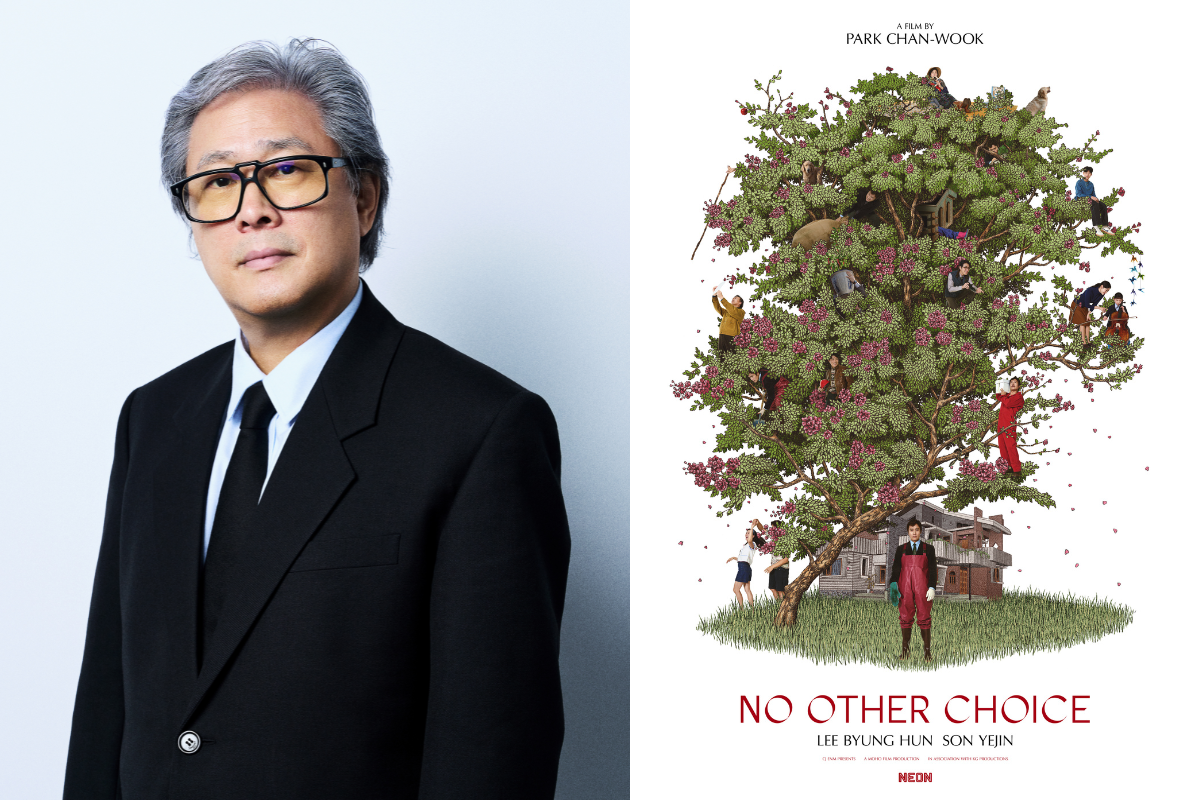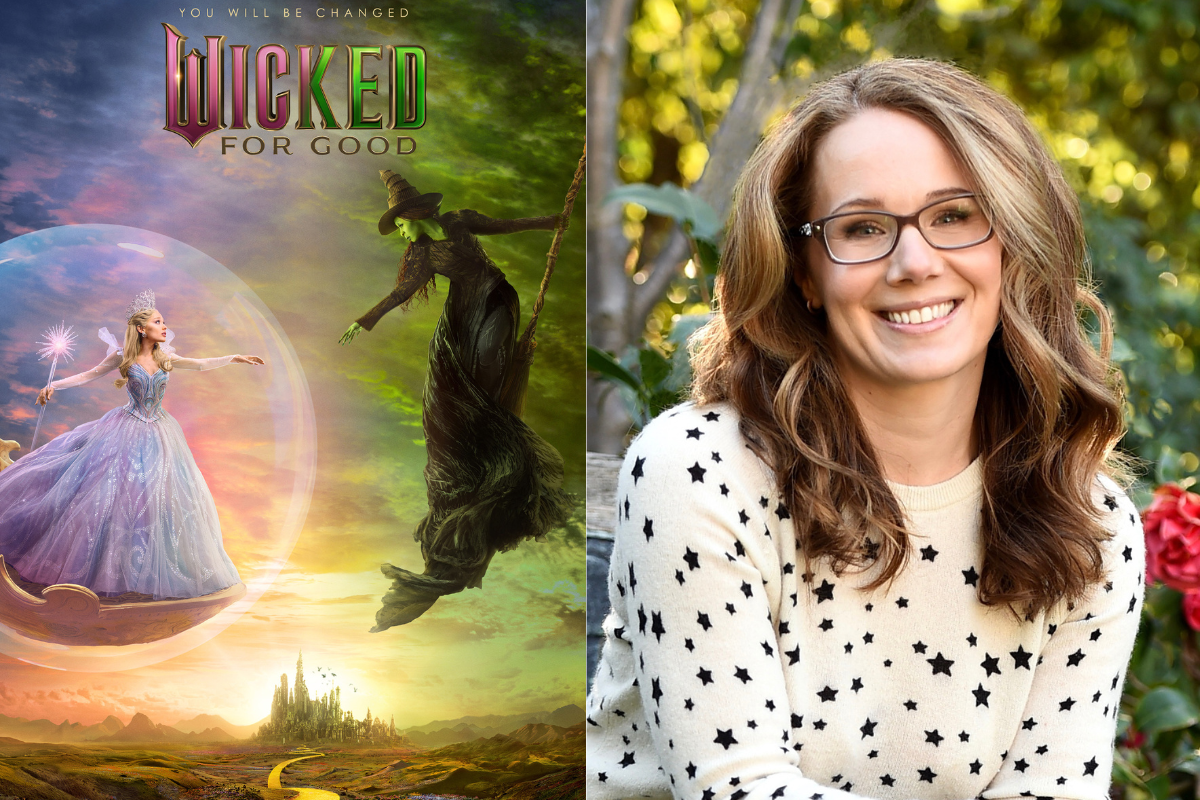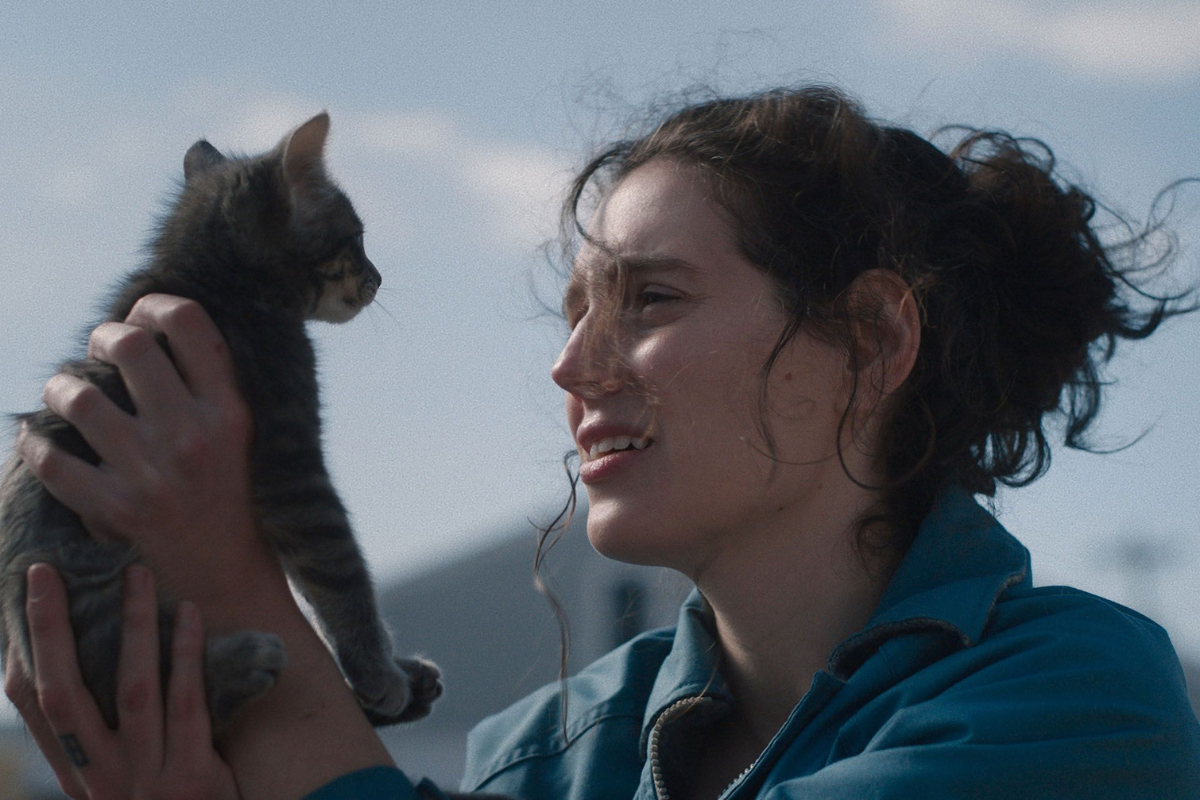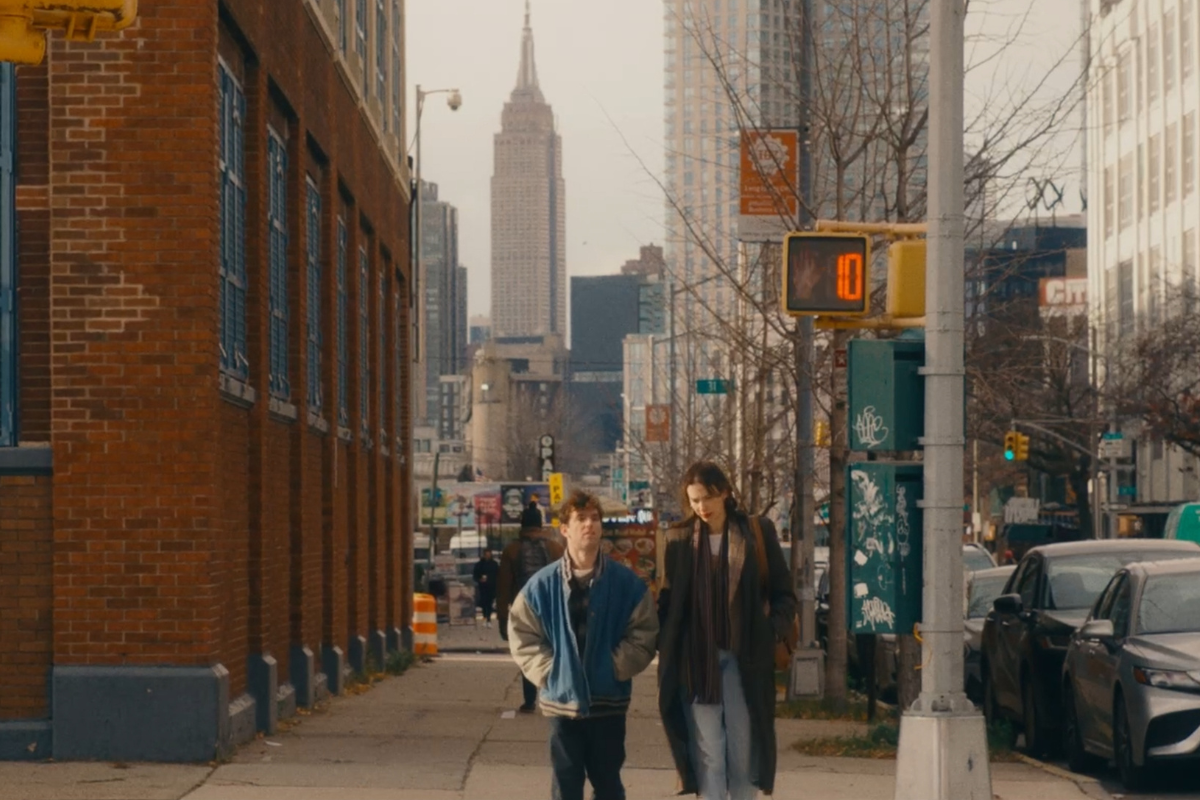Cinematic Ingredients: An Interview with ‘After Yang’ Filmmaker Kogonada
‘After Yang’ filmmaker Kogonada speaks with Script about adapting the short story into a feature, his personal and emotional connection to the story and characters, his filmmaking influences effortlessly bleeding through his work and more!
When his young daughter's beloved companion — an android named Yang — malfunctions, Jake (Colin Farrell) searches for a way to repair him. In the process, Jake discovers the life that has been passing in front of him, reconnecting with his wife (Jodie Turner-Smith) and daughter across a distance he didn't know was there.
Kogonada's adaptation of Alexander Weinstein's short story, originally titled Saying Goodbye to Yang, is a breath of fresh air in this non-dystopian distant future. The film immediately grabs your attention from opening shot and keeps the viewer engaged through Jake's inner and external journey - and begs the question to the viewer, 'What does it mean to be human and how far will we go for the emotional attachments that we have to our possessions?' Kogonada's point of view is unmatched from story to framing characters and the use of music.
I had the absolute pleasure of speaking with After Yang writer-director and editor Kogonada about adapting the short story into a feature, his personal and emotional connection to the story and characters, his filmmaking influences effortlessly bleeding through his work and more! Also, I highly encourage all readers to check out Kogonada's website and watch his brilliant video essays on some of the greatest filmmaking auteurs in history - be ready to take notes!
This interview has been edited for content and clarity.
Sadie Dean: What initially drew you to this specific short story as a visual storyteller from Alexander Weinstein's book?
Kogonada: I was initially led to another story in that collection that my producer had the rights for, and it didn't resonate with me in the way where I felt like this would be something I would want to adapt and direct as a film. And then she had encouraged me to read the other short stories, and this one really stayed with me; there was something about it that was very intriguing, and it was incredibly complex, and matrix like - I don't want to dismiss it, because it was a great story, but this one was really like a family drama. It took place over one day, there was something very minimal about it, but what it was addressing and dealing with felt so deep and emotional, and resonated with me as at the time I was a fairly new father. And in relationship to so many things; memory loss, alienation - the ingredients. I've realized more and more that when you're looking for something that you want to create, it really is about the ingredients, where you can really imagine yourself cooking with them, you know? [laughs] I have some chef friends - they'll have a recipe in mind, but then they'll go to a market and they're so taken by some ingredient that they will completely shift. And I understand that increasingly more as a filmmaker, that sometimes the recipe you have in your head is not necessarily the thing you should make, you should really kind of be drawn to the best ingredients that make you engaged in a different way.
Sadie: Having that connection early on being a new father at the time, did you have more of a direct emotional connection to Jake and what he was going through?
Kogonada: Yeah, absolutely. I think for me, Jake represents a part of me in the past, a part of me in the present; this sort of person who can feel disconnected. When we start the story, we see him doing something that at one point and we see it in a later conversation, that he sort of fell in love with the idea of tea making, and it provided a kind of meaning for him in this world and the pursuit of tea had something that almost grounded him and I've had plenty of those things in my life. When I found myself almost discovering cinema, as opposed to just movies that were, like for most of us, just kind of a distraction from everyday life or a treat, which was my experience with movies when I was a kid, but then you suddenly see a certain kind of film that really will stop you and captures your imagination and then feel so deeply meaningful in a way existentially so. And then it becomes something you study or in your case, something you write about and now something you make and you can start losing your love for the thing or the way in which it sort of invigorated you, it can disappear and that part of Jake in this moment where he's trying it, suddenly has become a part of a career.
Then also the way in which he feels detached from his family. And I think for me, prior to family, I sort of lived a very detached life. And it protected me from emotion and vulnerability and feeling loss or pain. I think if you can move through life detached, you can protect yourself. And for me, once I had children, it did the opposite - it made me feel so exposed and vulnerable to pain and loss and it was incredibly frightening, but also felt deeply meaningful and worthwhile in a way that nothing had. So, there's a part of me trying to understand that through Jake, where he is with his family and feels this sort of loss and disconnection as a kind of starting point to try to understand and what Yang will reveal in him.
This isn't a story of the father being a hero who's trying to save a robot and fix him, but really someone who is being fixed and saved by the robot. He's trying to help but in the pursuit of that, things are being rekindled and he's also recognizing what has been passing before him.
Sadie: Yeah, that deep loss but he’s finding reconnection to himself and his family, and specifically Mika. In terms of adaptation, taking a short story and then blowing it up into feature, what was that writing process like for you? And did you ever consult with Alexander during that process, as well?
Kogonada: No, not during the process, but he was really the ideal author to adapt. I met with him at his home in Michigan, prior to writing the story, and he made me tea, he's a real tea connoisseur and also cooked me a meal. And then we went to a nearby lake and had this really great long conversation. And he really just gave me full permission to make this my own - there was a real mutual trust and admiration, and he was just so supportive of me taking his work and making my own version of really exploring what I wanted to explore in it. And he's been so supportive of that. So, for me, it did give me the sort of freedom to use this short story as a launching pad and with the ingredients that he was exploring, and really try to make a more personal work from it. And there were a lot of elements; there's the Asian robot - he wrote it, he's not Asian, and I loved what he was trying to explore there. He was very reflective in the way he created the story. But I had a real personal connection with this construct of Asianess; the idea of manufacturing Asianess is very resonant with me, I think I identify with that in my own life. And so, it allowed me to really explore that in a different way.
In the writing process, there are different ways that people write, but I never wanted to have a God's eye view of things and to know exactly what Yang was about and what his program was about. I mean, Yang for me, I was writing him as a mystery. And really, those conversations reflect me trying to peel away at Yang and in discovering him and even his responses were sometimes a surprise to me, as I'm sure you understand that in the writing process, how words and a line can really surprise you and I think Yang all the way to the very end, I never felt was a mystery and that for me was a really delightful engaging way to work my way through the story.
Sadie: The beauty of the writing process and exploring your characters. You certainly see in your in your filmmaking, your filmmaking influences from Ozu, Bergman and Malick in this film, especially. Correct me if I'm wrong, but that opening scene of the families dancing seemed like a homage to Spike Lee's Do the Right Thing, with the dancing and the color palettes. The framing and camera placements are very specific to the story and the emotions and what these characters are going through and processing - what was that collaboration process like with you cinematographer Benjamin Loeb?
Kogonada: Benjamin was such an important collaborator, and we had ritual of eating ramen at the end of, not every day, but a lot of days and we often use ramen as a metaphor [laughs] at what we were trying to get at. We'd talk about the broth, and like, ‘Oh, we want to create this sort of experience of the layers of this broth.’ But he was so important. We talked about some of the influences. But one of the things that I've learned in making a film is so many of those influences need to be really buried inside of you, because when you're making a film, it's a real timed art form, where every day the time is ticking, and you don't really have time to look at other works. And so, it was great, because we had this little moment before, and we were watching and discussing things, but in the moment those things are inside, the real influences are inside of you, and they will dictate kind of what you're drawn to. And so we saw that in our early conversation, and how in the moment, we were drawn to a certain kind of framing and a certain kind of texture. There was a real mix of things that we talked about prior and then in the moment, kind of responding to this situation, the decisions that we had to make.
I've never heard that comparison about Spike Lee but of course, that is so lovely. I was actually thinking of this Shaw Brothers film that I saw when I was a kid that also kind of has that opening sequence, it's not dance, it's martial arts, but it's also using different colors for each character. But God, as soon as you said that, I thought, ‘Oh, my God, there is a real conversation between those two as well.’ I love that film - I'm sure that was also buried in me and had an influence.
Sadie: Now you can do a special cut with Rosie Perez and the families dancing and see if people catch it. [laughs]
Kogonada: Yeah, [laughs] that's a really beautiful observation, that's really great.
Sadie: With this being a sci-fi film, you’re kind of going against the grain - you're using very organic material and earth tones, rather the typical shiny metallic materials. How did you come to that creative decision with your art department?
Kogonada: I think from the beginning, and even in the writing process, that was sort of built into the descriptions. And I happen to have two really incredible, insightful designers - costume and production, who almost immediately not only got it, but had their own take and elaboration of it. We had created a backstory about a society that had to deal with a kind of catastrophic ecological event and it had humbled them, that they could no longer ignore the integration of nature, so it was really almost for the sake of survival as opposed to something that was like a fad or a group - it's just about surviving. And once we understood that history, they were able to really create almost a timeline of design and we knew, it’s exactly what you said, we would trade the sort of typical industrial factory heavy, dystopian metals and glass for something that felt more organic and natural; and that we would also make technology itself more invisible - that there wouldn't be floating monitors or holograms or that it wouldn't be gadget centric, that we would be more in the world of the present.
Sadie: Rights, it's not as intrusive. The music, again, it’s very specific like the visuals. The song Glide and the lyrics, it’s like the movie but in song form. How did you land on this song and did you have that song in mind when writing this?
Kogonada: Yeah, it's written into the script. Even that fictional band is written in the script. And then I had this dream of Mitski doing the cover of it, selfishly, I just wanted that cover to exist. But it's from a film called All About Lily Chou-Chou that I watched years ago. And that song has resonated and haunted me; it's a very haunting song in the context of that film, which is about youthful alienation and longing. And so, when I was writing this and thinking about Yang's world, and the mystery, and what it meant to be Yang, that that song just immediately came to mind. And when I was writing that concert scene, I just thought, ‘Oh, this is a song that these young people are listening to.’ And I imagined that it was a band that took that film and created their own identity. And then I thought about Mitski, and I was able to reach out to Mitski and she had said that that song was meaningful to her and that she was in Japan when that song came out – and that she did a version of it is really very special. And it means so much that that it now exists as a song and is a part of our film.
After Yang is now available in Theaters and streaming on Showtime.
Learn more about the craft and business of screenwriting from our Script University courses!
Sadie Dean is the Editor of Script Magazine and writes the screenwriting column, Take Two, for Writer’s Digest print magazine. She is also the co-host of the Reckless Creatives podcast. Sadie is a writer and filmmaker based in Los Angeles, and received her Master of Fine Arts in Screenwriting from The American Film Institute. She has been serving the screenwriting community for nearly a decade by providing resources, contests, consulting, events, and education for writers across the globe. Sadie is an accomplished writer herself, in which she has been optioned, written on spec, and has had her work produced. Additionally, she was a 2nd rounder in the Sundance Screenwriting Lab and has been nominated for The Humanitas Prize for a TV spec with her writing partner. Sadie has also served as a Script Supervisor on projects for WB, TBS and AwesomenessTV, as well as many independent productions. She has also produced music videos, short films and a feature documentary. Sadie is also a proud member of Women in Film.
Follow Sadie and her musings on Twitter @SadieKDean







